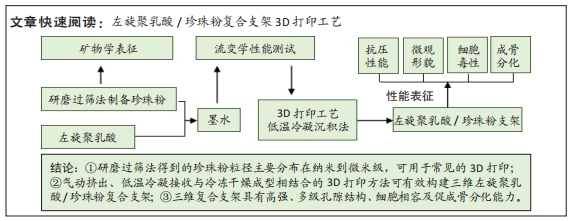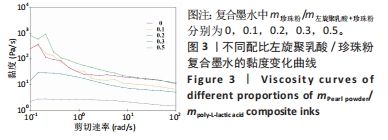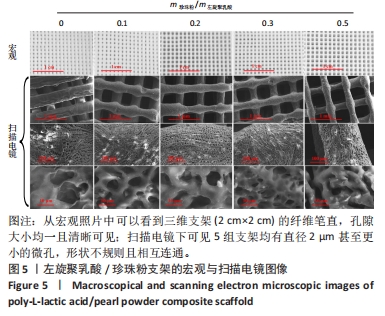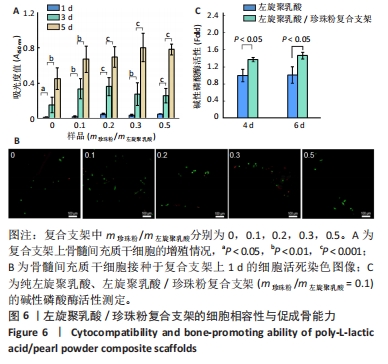[1] ATALA A, KASPER FK, MIKOS AG. Engineering complex tissues. Sci Transl Med. 2012; 4(160):112-160.
[2] ANNAMALAI RT, HONG X, SCHOTT NG, et al. Injectable osteogenic microtissues containing mesenchymal stromal cells conformally fill and repair critical-size defects. Biomaterials. 2019;208:32-44.
[3] 杨思敏,王新卫.自体骨移植修复骨缺损的临床研究进展[J].中国疗养医学,2019, 28(9):945-948.
[4] AZI ML, APRATO A, SANTI I, et al. Autologous bone graft in the treatment of post-traumatic bone defects: a systematic review and meta-analysis. BMC Musculoskel Dis. 2016;17(1):465.
[5] 马武秀,程迅生.自体骨移植修复骨缺损的研究进展[J].中国骨与关节损伤杂志, 2011,26(6):574-576.
[6] SHIBUYA N, JUPITER DC. Bone graft substitute: allograft and xenograft. Clin Podiatr Med Surg. 2015;32(1):21-34.
[7] BRACEY DN, JINNAH AH, WILLEY JS, et al. Investigating the osteoinductive potential of a decellularized xenograft bone substitute. Cells Tissues Organs. 2019;207(2):97-113.
[8] SU X, WANG T, GUO S. Applications of 3D printed bone tissue engineering scaffolds in the stem cell field. Regen Ther. 2021;16:63-72.
[9] WANG S, SHI Z, LIU L, et al. The design of Ti6Al4V Primitive surface structure with symmetrical gradient of pore size in biomimetic bone scaffold. Mater Design. 2020; 193:108830.
[10] WU S, LEI L, BAO C, et al. An injectable and antibacterial calcium phosphate scaffold inhibiting Staphylococcus aureus and supporting stem cells for bone regeneration. Mat Sci Eng C. 2021;120:111688.
[11] YAZDANIAN M, TABESH H, HOUSHMAND B, et al. Fabrication and properties of βTCP/Zeolite/Gelatin scaffold as developed scaffold in bone regeneration: in vitro and in vivo studies. Biocybern Biomed Eng. 2020;40(4):1626-1637.
[12] RASTOGI P, KANDASUBRAMANIAN B. Review of alginate-based hydrogel bioprinting for application in tissue engineering. Biofabrication. 2019;11(4):042001.
[13] AHSAN SM, THOMAS M, REDDY KK, et al. Chitosan as biomaterial in drug delivery and tissue engineering. Int J Biol Macromol. 2018;110:97-109.
[14] ABDOLLAHIYAN P, OROOJALIAN F, MOKHTARZADEH A, et al. Hydrogel-based 3D bioprinting for bone and cartilage tissue engineering. Biotechnol J. 2020;15(12):e2000095.
[15] SHUAI C, YANG W, FENG P, et al. Accelerated degradation of HAP/PLLA bone scaffold by PGA blending facilitates bioactivity and osteoconductivity. Bioact Mater. 2021;6(2):490-502.
[16] CHEN VJ, MA PX. The effect of surface area on the degradation rate of nano-fibrous poly (L-lactic acid) foams. Biomaterials. 2006;27(20):3708-3715.
[17] HUANG Q, LIU Y, OUYANG Z, et al. Comparing the regeneration potential between PLLA/Aragonite and PLLA/Vaterite pearl composite scaffolds in rabbit radius segmental bone defects. Bioact Mater. 2020;5(4):980-989.
[18] WU X, STROLL S, LANTIGUA D, et al. Eggshell particle-reinforced hydrogels for bone tissue engineering: an unconventional approach. Biomater Sci. 2019;7:2675-2685.
[19] 廖军,徐普.纳米淡水珍珠粉对成骨相关基因表达的影响[J].中国组织工程研究, 2022,26(27):4325-4329.
[20] CHEN X, PENG LH, CHEE SS, et al. Nanoscaled pearl powder accelerates wound repair and regeneration in vitro and in vivo. Drug Dev Ind Pharm. 2019;45(6):1009-1016.
[21] MA C, JIANG L, WANG Y, et al. 3D printing of conductive tissue engineering scaffolds containing polypyrrole nanoparticles with different morphologies and concentrations. Materials. 2019;12(15):2491.
[22] GANG F, YAN H, MA C, et al. Robust magnetic double-network hydrogels with self-healing, MR imaging, cytocompatibility and 3D printability. Chem Commun. 2019; 55(66):9801-9804.
[23] 张伟蒙,汪杰,胡晶.3D打印骨组织支架孔隙结构对支架性能影响的研究进展[J].中国塑料,2022,36(12):155-166.
[24] OSTROVIDOV S, SALEHI S, COSTANTINI M, et al. 3D bioprinting in skeletal muscle tissue engineering. Small. 2019;15(24):1805530.
[25] DADHICH P, DAS B, PAL P, et al. A simple approach for an eggshell-based 3D-printed osteoinductive multiphasic calcium phosphate scaffold. ACS Appl Mater Interfaces. 2016;8(19):11910-11924.
[26] LUO W, ZHANG S, LAN Y, et al. 3D printed porous polycaprolactone/oyster shell powder (PCL/OSP) scaffolds for bone tissue engineering. Mater Res Express. 2018;5(4):045403.
[27] DU X, YU B, PEI P, et al. 3D printing of pearl/CaSO4 composite scaffolds for bone regeneration. J Mater Chem B. 2018;6(3):499-509.
[28] GUO F, WANG E, YANG Y, et al. A natural biomineral for enhancing the biomineralization and cell response of 3D printed polylactic acid bone scaffolds. Int J Biol Macromol. 2023;242:124728.
[29] 张刚生,李浩璇.生物成因与无机成因文石的FTIR光谱区别[J].矿物岩石,2006, 26(1):3-6.
[30] 张楷,徐普.珍珠粉复合支架在骨修复的研究进展[J].口腔颌面修复学杂志,2022, 23(4):297-315.
[31] 李娜,徐普,陈灼庚,等.纳米珍珠粉人工骨修复兔股骨远端缺损[J].中南大学学报(医学版),2020,45(6):684-692.
[32] 廖军,徐普.纳米淡水珍珠粉对成骨细胞成骨活性的影响[J].医学研究杂志,2022, 51(2):123-127.
[33] CHEN R, PYE JS, LI J, et al. Multiphasic scaffolds for the repair of osteochondral defects: Outcomes of preclinical studies. Bioact Mater. 2023;27:505-545.
[34] 韦宗辰,郗悦玮,翁云宣.聚乳酸基复合骨组织修复材料的研究现状及进展[J].中国塑料,2021,35(9):136-146.
[35] YUE M, LIU Y, ZHANG P, et al. Integrative analysis reveals the diverse effects of 3D stiffness upon stem cell fate. Int J Mol Sci. 2023;24(11):9311.
[36] ENGLER AJ, SEN S, SWEENEY HL, et al. Matrix elasticity directs stem cell lineage specification. Cell. 2006;126(4):677-689.
[37] WEI Q, WANG S, HAN F, et al. Cellular modulation by the mechanical cues from biomaterials for tissue engineering. Biomater Transl. 2021;2(4):323-342.
[38] WU L, PEI X, ZHANG B, et al. 3D-printed HAp bone regeneration scaffoldsenable nano-scale manipulation of cellular mechanotransduction signals. Chem Eng J. 2022; 455:140699.
[39] LU Q, DIAO J, WANG Y, et al. 3D printed pore morphology mediates bone marrow stem cell behaviors via RhoA/ROCK2 signaling pathway for accelerating bone regeneration. Bioact Mater. 2023;26:413-424.
[40] 邵云菲,王卉,朱怡然,等.基于丝素蛋白材料构建骨组织修复支架的三维多孔结构体系的研究进展[J].合成生物学,2022,3(4):795-809. |






